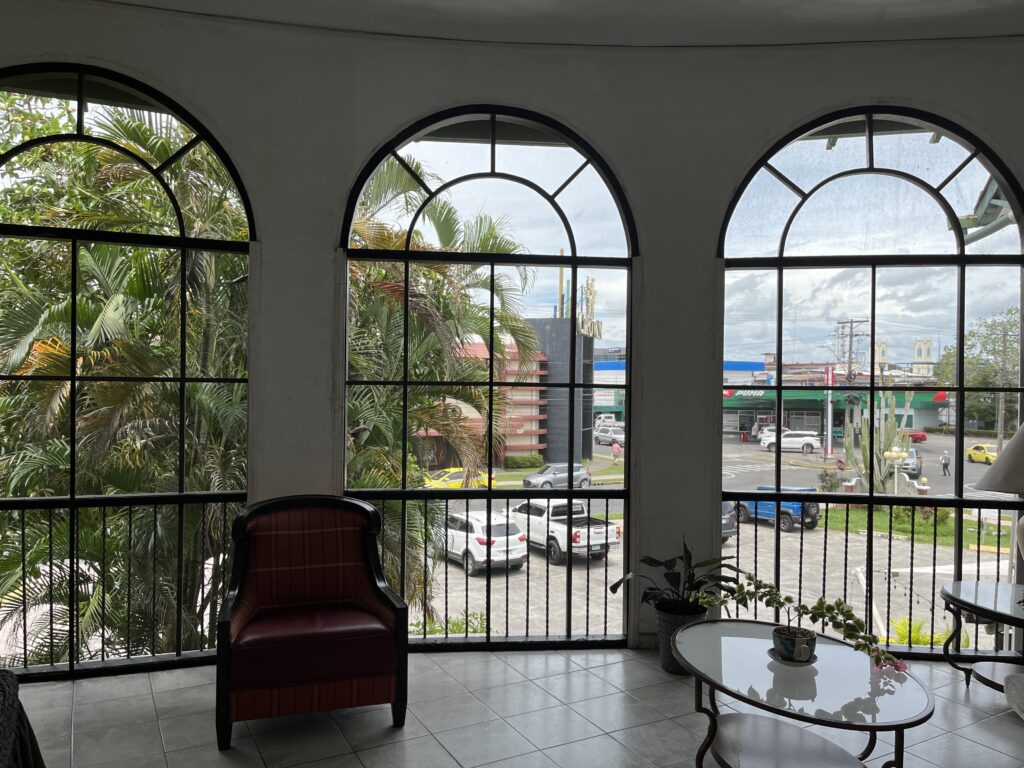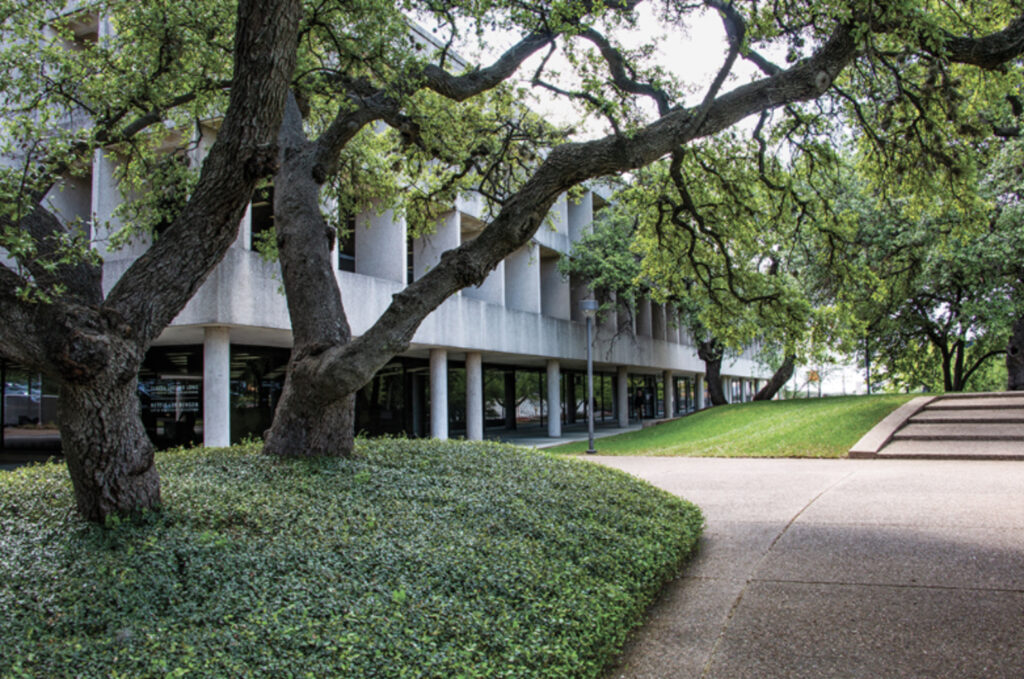In her 2019 book Erased: The Untold Story of the Panama Canal, historian and award-winning author Marixa Lasso wove together lost pieces of history to tell the canal’s story from a Panamanian point of view. During her spring 2025 stay as LLILAS Tinker Visiting Professor, she began research in the Benson Latin American Collection for her next book, which is a cultural history. In this interview, Lasso explains her interest in this story.
Your new book project looks at how humans lived with heat and humidity in the tropics before air conditioning. How did you get interested in this topic, and what are you learning?
I’m at the very beginning of this project, and I came to Austin to start the research. It is a cultural history that looks at how people used to live in warm and hot, humid climates before the invention of air conditioning, how people for millennia adapted and lived normal lives without this technology. The reason I became interested is because I believe that since the mechanical cooling of air conditioning makes global warming even worse, and also heats cities even more, adding to the “urban heat-island effect,” it is not a viable solution. What can the past teach us that could be helpful? What can memories of the past tell us? I want to go to the past and look at a different way of understanding our relationship to the environment, to heat, to humidity.
When you say, “go to the past,” how far back are you going and what are you looking at?
I am going to the pre-Columbian past. A lot of what I did here in Austin was to read the secondary literature—archaeologists, Mayanists. I am looking at ethnographic literature to understand ideas about the heat, about the weather, before the Spanish Conquest brought the idea that the humid tropical environment was a problem. Those of us who live in the humid tropics grow up with this idea that we live in an environment that is not good—it’s not good for human beings and it’s not good for civilization. That’s why I think it is important to go so far back in time. I want to look at how people in different cultural settings kept adapting—from pre-Conquest times to Spanish colonial times, the nineteenth century, the early twentieth century, and, finally, in times when you already had air conditioning but it was not yet as prevalent as it is today. So, I am not looking at the effects of air conditioning; I’m looking at conditions before.

What is meant by “urban heat island”?
Urban heat islands are the result of a certain way of building cities that becomes prevalent with two things—cars and air conditioning—which were invented around about the same time. There’s the creation of big cement spaces with fewer trees. But I’m not studying urban heat islands because that’s been done by plenty of other people. What I want to know is, how was it before? Can we imagine a world without these infrastructures? How did we relate to the environment when we didn’t have the option of a car or AC, and we had to live in this same environment?
When you’re writing about history and you have a question like that, is your task to do research and describe? What more is there?
You can’t give recipes or solutions, because that’s for policymakers. But I do believe, strongly, that history and descriptions of the past push us to think more broadly. We are so set in our ways, and the way in which we live today, that it is hard for us to even think that there are other possibilities. In that sense, the past gives us options that we cannot even imagine, unless we do research and look at them. The past tells us about the richness of humanity. It’s a reminder that there is not just one way of living. Particularly now, with this environmental crisis, the past can be very important in that regard.
Are there any interesting secrets you’d like to share that that you have discovered in your research?
One of the things that I’m fascinated by is windows. Glass is very old in temperate climates, but it was absolutely unnecessary in tropical places. You need glass to keep the cold out and the sun in. But when there’s no cold to keep out, you don’t need it at all. And it’s a problem because it makes things hotter. I’m fascinated by the idea that, at least in Panama, where I grew up, houses all the way through the 1940s had no glass, because if you don’t have air conditioning you don’t need glass. It was just a window and mosquito net, and some iron bars that were beautifully designed. The technology is so simple. You can still see it on screened-in porches, even in places like Texas or Florida—there is no glass, and the air flows in and out. That’s just one simple example. Glass is horrible in tropical climates. You have all these glass buildings that make the city hotter, and they require air conditioning.

Which came first in tropical cities, air conditioning or glass?
Air conditioning came first. Of course, people knew that glass existed, but it wasn’t necessary. Quite the opposite. The other thing that I find fascinating is to rethink the idea of what a house should protect you from. A house should protect you from extreme weather, from animals, but what does it mean to be protected from heat? You don’t need the same type of house as those that are built to protect you from cold. When you look at how people built in the past, you realize that they were building very wisely and appropriately until a certain notion of the “civilized house” became dominant and forced us to forget other options.
What if people could take some of this knowledge and put it to use now?
I use it myself. I don’t use air conditioning. I live in a house built in a way that does not require it, so I’m very conscious that the technology is there. The house has balconies, it has big windows, it has cross ventilation, ceiling fans, and the windows have permanent awnings that protect them from sun and rain. This is a technology that we know how to use. With air conditioning, I’m often cold because when I’m outside, I’m dressed in a certain way; I go inside and it’s too cold. There’s nothing as pleasant as being under a tree on a summer day, or as being in a house after you are outside where it’s hot: you come inside and it feels cool—even without air conditioning—which is the feeling in my apartment. My home is one option; there are many other options for doing this. People are becoming increasingly aware of the problem of urban heat islands, but for things to change, it is not only necessary to recognize that there is a problem, there also has to be a way of envisioning something different. That’s where the past can be useful—not to repeat it, but to perhaps unlearn certain things, remember others, and think creatively about the future.
We have made a hostile outside—huge parking lots without trees, sidewalks without trees, asphalt, which is also a new technology. If we lived in a place where all the sidewalks had trees, and the asphalt were not creating this heat, the outside would be more similar to being in a park. Imagine you’re in a park in the summer, under a tree, and instead of asphalt there is earth and grass—what if outdoors were like that?

How did we get here? And as our planet only gets hotter, how do we step back from the brink?
We are trapped in an idea of progress that comes from the nineteenth century. This idea espouses that the world is better with more technology and that technology is going to solve everything. The idea of using less technology is almost a sin—an anathema. Going “backwards” is the worst thing you can do within our idea of progress. But this is not an innately human idea, it’s a recent idea of the world. It keeps us paralyzed when confronting global warming, unless we realize that this idea of progress has only been around for two hundred years, that human beings are way older than this idea, and that it is a historical idea that is perhaps not fit for the twenty-first century. We should stop seeing this nineteenth-century idea as modern and instead begin to see it as backward. ✹
Editor’s Note
This interview took place outdoors on May 13, a day on which Austin recorded a high of 101 degrees F (38° C). Sitting under the canopy of live oak trees outside of LLILAS Benson, with a grassy hill nearby and no asphalt, we were both comfortable.
